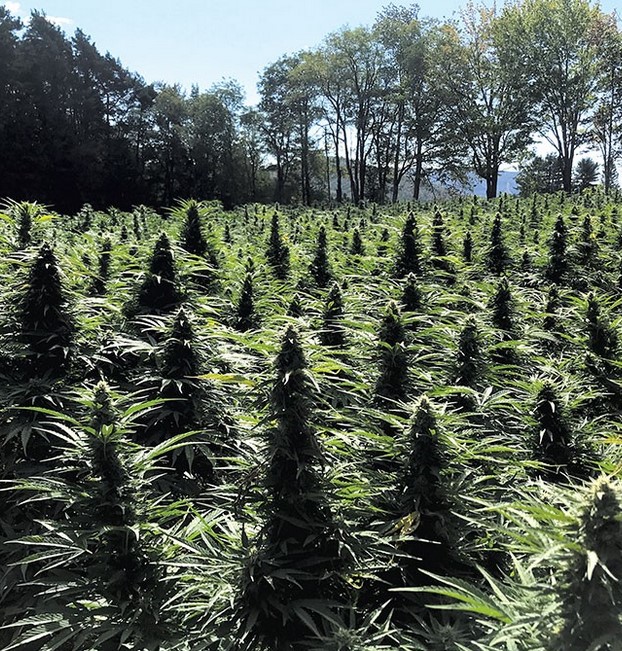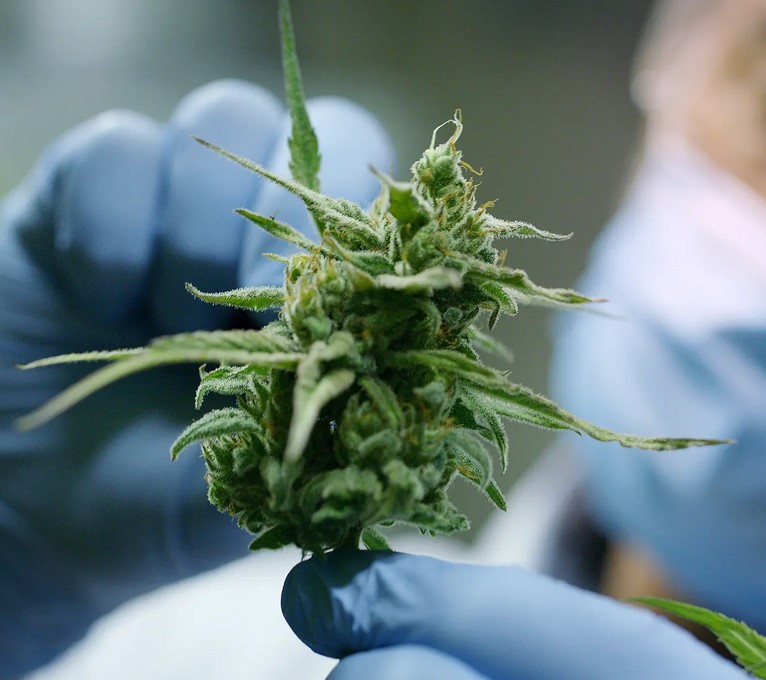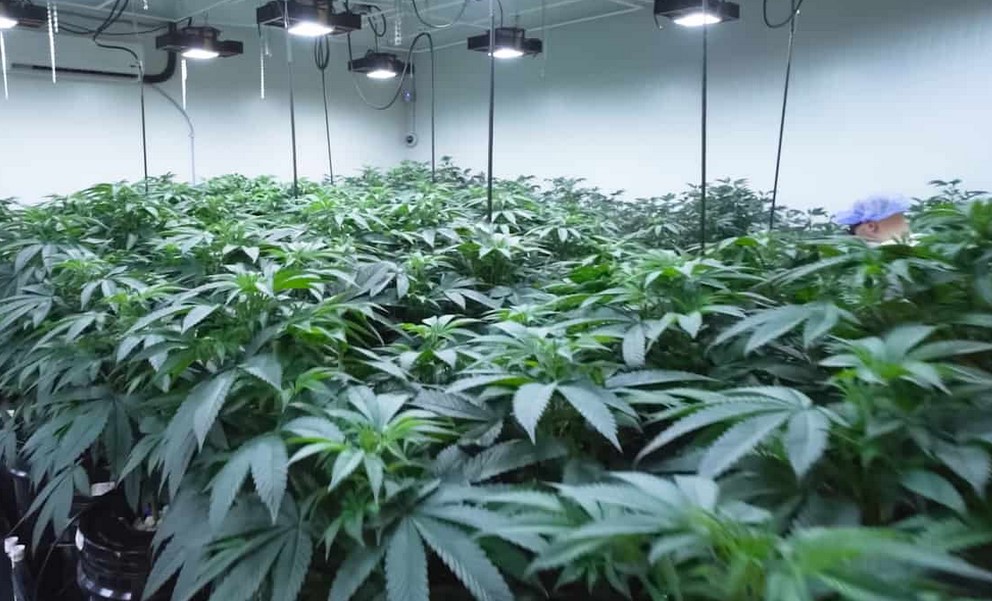Cannabis grown outside has a number of benefits. Aside from being an amazing experience, it enables growers to cultivate larger plants and get better yields. Continue reading to learn how to grow cannabis outdoors. If you’d like to buy best cannabis, use our delivery dispensary.

There are several benefits to living as a gardener outside. Living in the countryside generally implies more space to work with, more sunshine, free rainwater, better ventilation, and the pleasure of working in the elements.
There are several benefits to growing plants outside, but there are also certain difficulties. Plants are more vulnerable to insect pests, bigger animals, heat waves, and cold snaps when cultivated outdoors. Indoor cultivation provides greater protection for plants while also allowing cultivators total control over the environment. They can freely change the temperature and humidity levels as they please, and their plants are far more hidden than those of outdoor farmers.
Indoor cannabis cultivators, on the other hand, have less area, lower yields, and must spend money on electricity bills to run their equipment. Growers may cultivate cannabis outside because it is a lot of fun and has several benefits. Aside from being an enjoyable experience, it enables growers to develop bigger plants with higher yield. Continue reading to learn how to grow marijuana in your own garden responsibly.
An outside option is a safe choice if you’re new to cannabis cultivation. It’s also very inexpensive; there are no additional power or energy costs, ventilation systems, or specialist equipment required. Second, producing outside allows you to grow huge plants with the potential for big harvests.
Whether you’re a novice gardener or not, you don’t have to be an expert in order to begin—but you do need a well-thought-out strategy. Read on to learn about the seven things you should know before planting your first outdoor garden.
Benefits of Growing Marijuana Outdoors
There’s no doubting that producing marijuana indoors has its challenges (which we’ll address later), but it also offers a slew of intriguing advantages:
- Eco-Friendly: Indoor cannabis cultivation is a large energy consumer because it consumes a lot of power. Not to mention ventilation systems and other equipment, indoor cannabis farming uses a significant quantity of electricity. It’s been estimated that just producing marijuana indoors in California consumes the same amount of coal as 200 pounds of marijuana. Your plants require sunshine, air, water, and limited resources to survive.
- Better Quality Buds: Marijuana cultivated outdoors has a unique flavor and scent. You’ll enjoy every puff if you choose the correct strain.
- Low Cost: If you pick the ideal site, outdoor production has limitless sunshine, fresh air, carbon dioxide, and rainwater. Purchase the greatest seeds available and nurture them carefully to ensure that your plants require little maintenance when they sprout. Once you’ve mastered controlling pests and difficult weather, growing marijuana outside should be a piece of cake.
- Larger Yields: Marijuana plants may grow up to six feet tall outdoors. A bush with this height contains 500 grams of dried bud. A single crop from just six plants is usually enough to satisfy your year-round demand for high-quality cannabis.
1. Your outdoor grow should start indoors
Cannabis seeds may be planted as early as two days after they’re sown, but it’ll take seven days for them to germinate. If you live in a cold environment, you should start the germination process sooner rather than later; the larger the plant, the more ripe it becomes. For additional information on seed planting and harvesting timeframes, see here
2. Choosing the right location is vital to your plant’s success.
Take these factors into account while selecting where to plant your cannabis plants:

Temperature: Cannabis plants are sensitive to significant fluctuations in temperature, even if they are resistant to a wide range of weather conditions. Cannabis plants should not be cultivated below 12°C or above 30°C for extended periods of time.
Sunlight: Cannabis plants thrive in abundance of sunshine. Choose a spot for the plant that has enough direct sunshine and indirect sunlight.
Shelter: Choose a location that will offer your plant the maximum level of protection from fickle conditions, such as gale-force winds or rain. Consider growing in a container that may be brought inside if the weather becomes unfavorable.
To keep the plant secure on chilly evenings, consider constructing a hoop house.
3. When deciding on genetics — do your research
If you’re thinking about selecting a strain, keep in mind the characteristics that are particular to your region. Some strains are more tolerant of chilly weather, while others thrive in hot and humid environments. Indica-dominant strains are typically more suited to colder climates, but sativa-dominant ones can be more heat and humidity resistant.
4. Understand the difference between growing in the ground vs. containers.
Although growing in the ground has certain benefits, they will only be realized if the soil is of high quality. If you use this method, make sure the dirt is adequate to grow in. Containers, on the other hand, allow you more control over the quality of the dirt while also enabling you to adapt to changing light conditions throughout the day – allowing you to quickly move plants from sunlight to shade.
5. Don’t skip the basics when it comes to soil: texture, drainage, water retention
Shop for soil that has a light texture and a nice balance of retaining water. Cannabis plants require both water and air at the roots to grow. If there is too much water, the roots may not get enough oxygen, but they will be harmed by drying out too quickly if there isn’t enough water retention.
6. Avoid one of the most common mistakes made by first-timers – overwatering
When watering the plants, make sure to water them completely and allow one inch of soil between applications. Because tap water might contain high amounts of chlorine or dissolved minerals that can accumulate in the soil and alter the pH or eliminate important microorganisms, it’s preferable to test the water quality or utilize filtered water instead.
7. Keep a grow journal to track your plants’ progress
There’s a lot of trial and error when it comes to cannabis. While creating your own strain may sound fascinating, there is a lot of information to grasp before you begin growing marijuana in general. Keeping notes on the development of your plants, including pictures of the plants at different phases and descriptions of each stage you went through, can assist you in looking back and learning from your errors, which will increase future harvests.
Although it is legal to cultivate up to four cannabis plants at home in Ontario, readers should carefully examine and follow all relevant legislation regarding marijuana cultivation and possession. This page was created merely for educational purposes and does not intend to take the place of professional or legal advice.
Is There a Precise Time to Harvest?
It’s tough to pin down a specific harvesting date. According To Most Authorities, Indicas Should Be Harvested Eight Weeks After The Light Cycle Begins. Sativas Usually Need To Be Harvested Ten Weeks After Flowering, But Auto-flowering Seed Strains Take 10 Weeks FROM SOWING TO BUD GROWTH
Make certain you have the equipment for collecting outdoors. Bring sealable bags when it’s time. If you’re transporting Ziploc bags, consider bringing a bag to store them in safely. While cannabis plants are still growing, cut them into manageable lengths. To put it another way
Hello, and thank you so much for your lovely cannabis crop! We’d want to tell you it’s time to get high and rejoice now. But there are a few more things you need to finish first. The buds must be cured and dried, most significantly.
